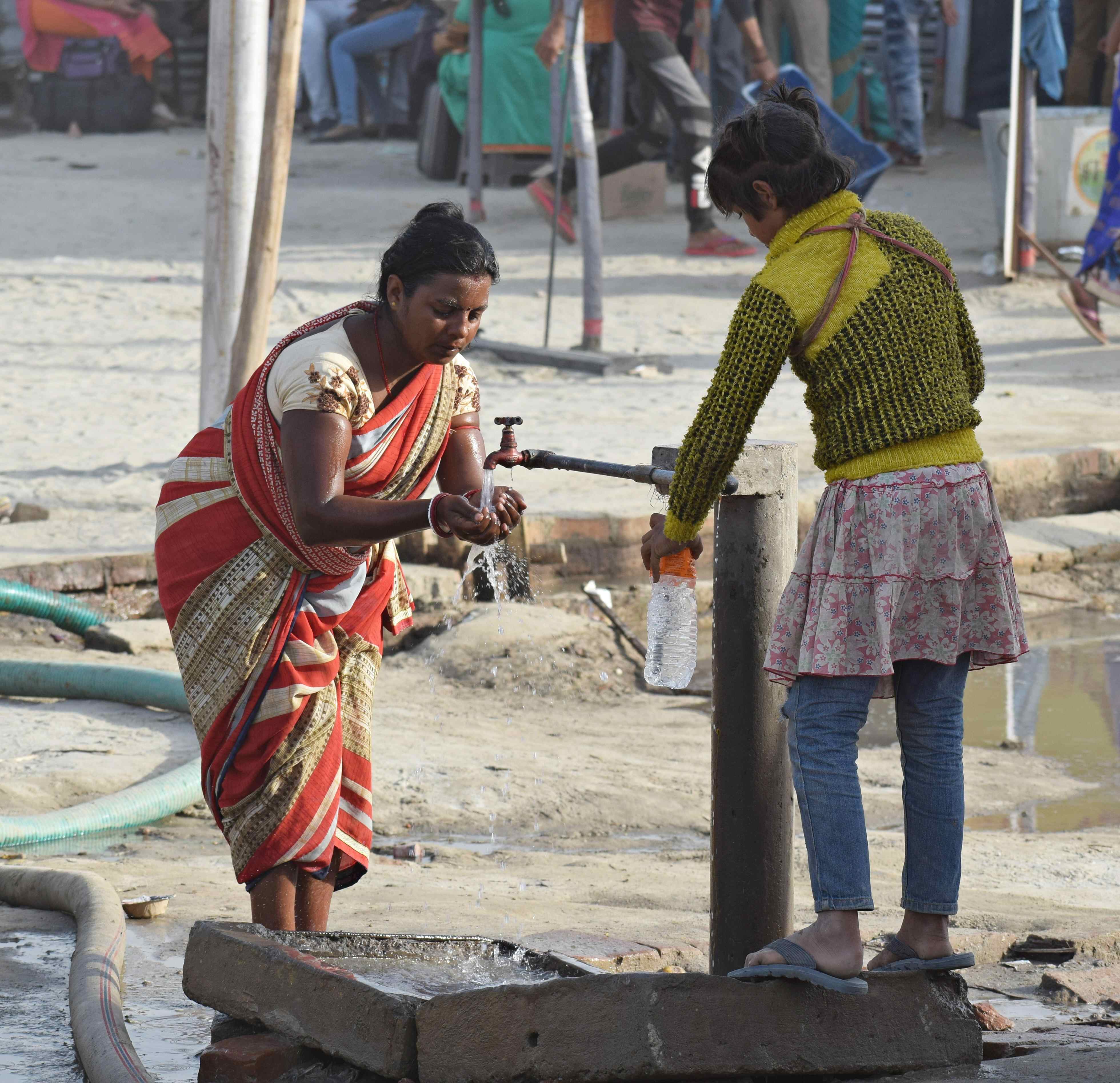Ensuring the elixir
Uttar Pradesh government is on a mission mode to rid the Bundelkhand region of water scarcity through robust policies and even international collaboration

Bundelkhand region, known for its valour, lately became infamous for water scarcity — leading up to large-scale migration of people to big cities. Owing to inaction of successive governments, it remained neglected, and was cumulatively relegated to a backward area status. Historically, however, the region had boasted of effective water management — both for drinking and irrigation purposes.
Rahila Sagar, Vijay Sagar, Keerat Sagar, Madan Sagar, Kalyan Sagar, Brahm Sarovar and linked ponds in Charkhari in Mahoba district are some of the many man-made water bodies in the region — mostly in bad shape. Actually, they fell prey to the so-called growth and development activities breaking the catchment areas of these water bodies, which resulted in their drying up. The condition deteriorated so much that people did not have enough to feed their cattle, forcing them to let these animals roam around. This practice, called Anna system in local parlance, harmed whatever little crops were being grown. So, there was a big challenge before the government. Instead of digging their heads in the sand, the Yogi government took the problem head on to resolve it. Actually, the state leadership is of the view that all these measures will contribute to Uttar Pradesh becoming a USD 1 trillion economy by 2027, with equitable focus on each region.
Bundelkhand region also faced the problem of outbound migration, as agriculture suffered due to the water crisis. So, the state government has taken initiatives that will not only increase the area of irrigated land but will also ensure safe drinking water for over 30 lakh people in the region. The government has separate plans for various districts falling under the Bundelkhand region. It has five projects for the Mahoba District with a total of over 11 lakh beneficiaries. The aim is to provide over 1.3 lakh Full Functional Household Tap Connections (FHTC), giving 2,300 direct employment opportunities at the same time. Lalitpur has been sanctioned 15 projects to benefit over 9.5 lakh people with a plan to provide 1.7 lakh FHTC, direct employment to 456 people and indirect employment to 710 people. Hamirpur has two projects to benefit 6.4 lakh people with 1.1 lakh FHTC. The project will provide direct employment to 1,854 people and indirect employment to 4,500 people. Jhansi District has been allotted seven projects to benefit 11.5 lakh people by providing over two lakh FHTC. This will generate significant employment opportunities as well.
To further expedite the process of taking tap water to villages, the Yogi government decided to organise camps in the Bundelkhand region to monitor 'Har Ghar Nal Yojana' scheme to ensure tap water for every household by November 2022.
Thirty-two projects of Jal Jeevan Mission are being taken to the ground, and around 467 piped drinking water schemes are under construction in the region. There are 43 surface water-based schemes and 424 ground water-based schemes. Provision of 11,95,265 FHTC is to be made for a population of 72,68,705 people living in 3,823 revenue villages.
Another project that would help the Bundelkhand region to regain some lost ground is the Ken-Betwa River linking project — possibly the first river interlinking project in the country. The Union Finance Minister announced in the 2022-23 Budget a huge allocation of Rs 44,605 crore for the project that is expected to offer irrigation benefits across nine lakh hectares of farmland, ensure drinking water for 62 lakh people, and generate 103 MW of hydropower and 27 MW of solar power. The work is likely to be completed in a span of eight years. Also, the UP CM had claimed in July that 60 rivers have been revived in the state, providing a boost to irrigation. Besides rivers, as many as 325 ponds have been revived in Jhansi District under the "One Village, One Pond" initiative.
Furthermore, the Israeli ministry of water and the UP government signed a MoU on August 20, 2019 for creating an India-Israel Bundelkhand Water Project. A 'plan of cooperation' was launched to create a long-term sustainable water management project for the region. They shared technical know-how in solving the water crisis in Bundelkhand region in which Babina block had been chosen for the pilot project. Basic planning for irrigation through river Pahuj in Babina block has already been drawn and now plans are afoot to execute it.
Why the assistance from Israel to solve the problem of water scarcity in the Bundelkhand region? Because the topography of the region is very similar to that of Israel. The country has been successfully dealing with similar issues for a long time. Israel records less rainfall and still manages agriculture nicely because of its unique conservation techniques. It may also change the lives of people of Bundelkhand. Efforts are being made to develop a number of agroforestry-based interventions for water conservation technologies in different parts of Bundelkhand region, which is helping in raising the groundwater tables at a number of places. So, the UP government is truly working on the dictum that water is the elixir of life.
Views expressed are personal



